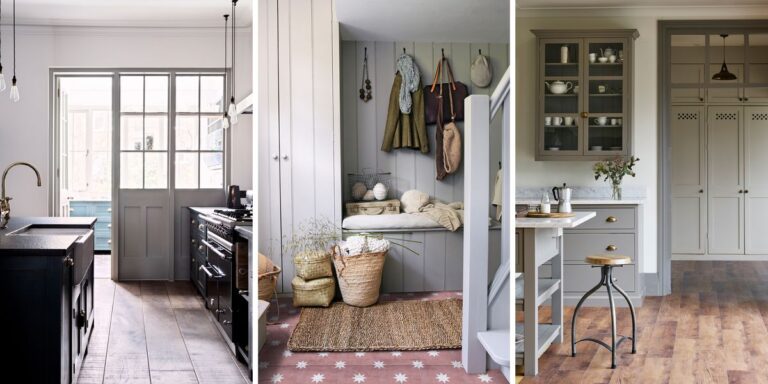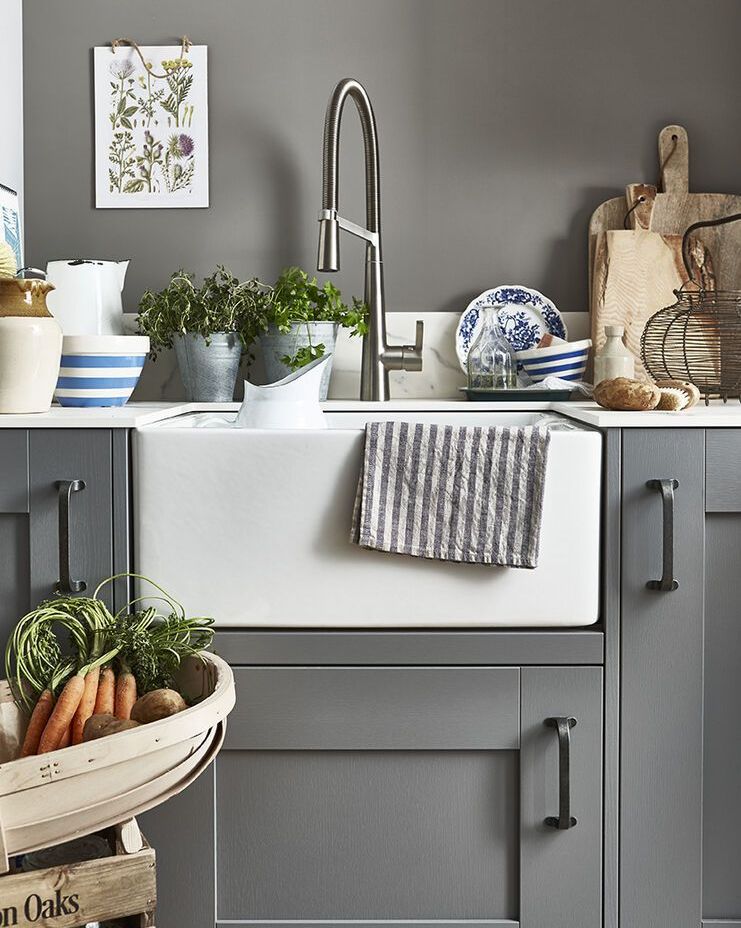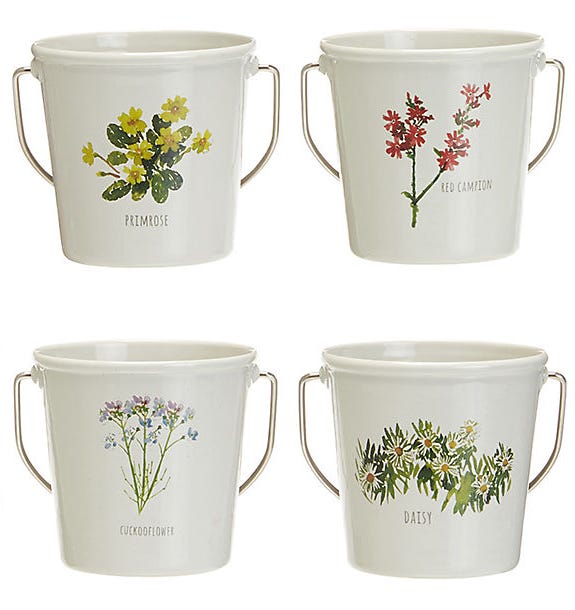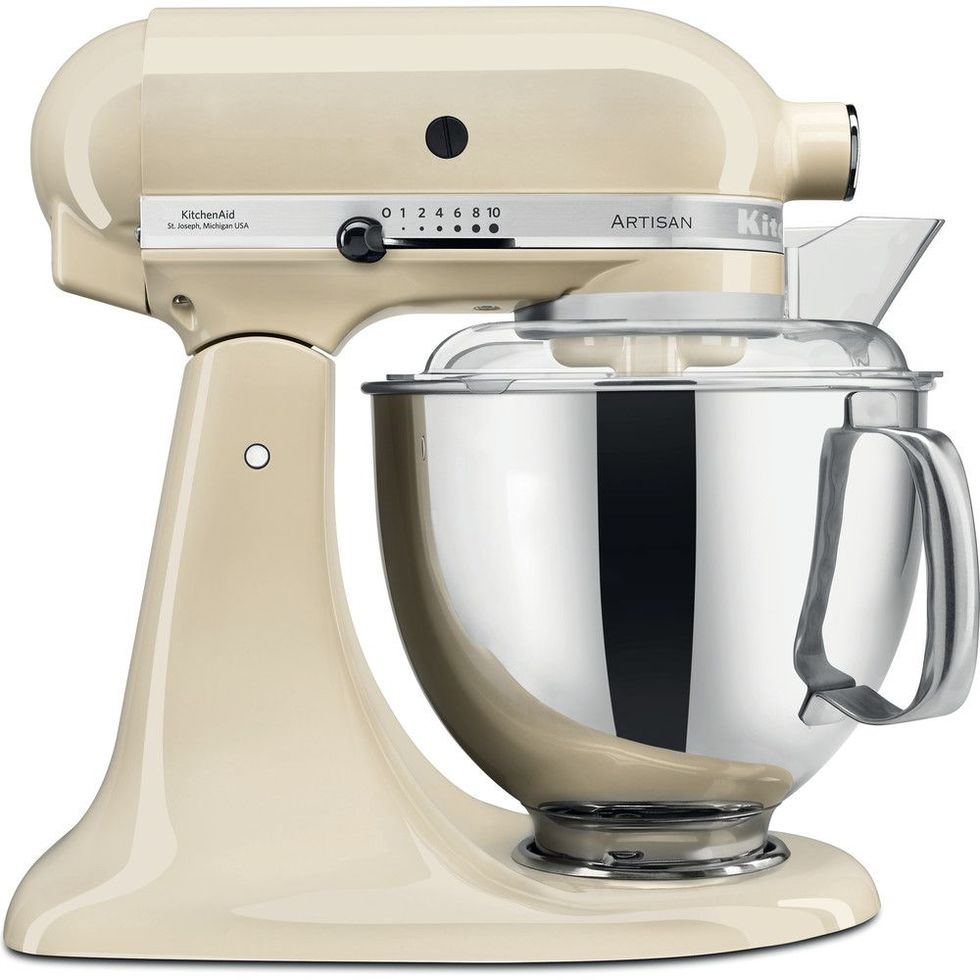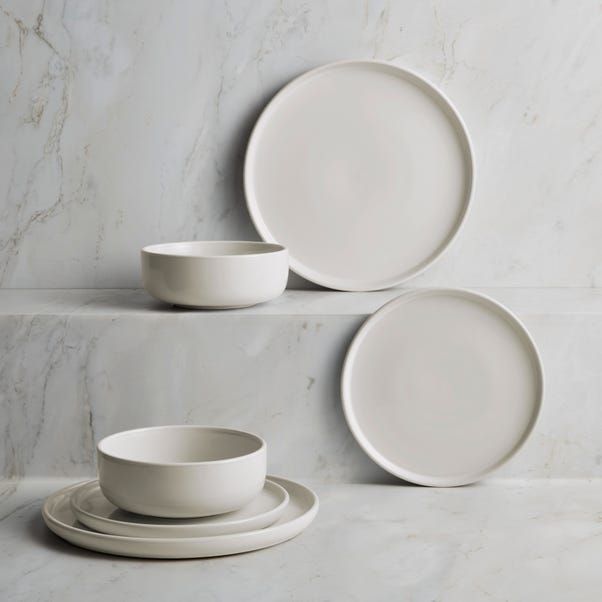In recent years, kitchen flooring has become a more practical and affordable alternative to traditional materials such as real wood and stone. Porcelain, luxury vinyl tile, and engineered wood are more affordable, easier to maintain, and thanks to advances in design technology, can look nearly identical to the real thing.
Residential architect George Omarianakis of GOAStudio is a big fan of the porcelain equivalent. “Solid engineered wood floors offer similar beauty, but don't have the durability or longevity of high-quality porcelain,” he says.
Michele Rodriguez-Wise, co-founder of Cheltenham-based interior design studio Luna Design, agrees: . However, they are much more durable, much easier to maintain, and the options are endless. ”
If you're designing a kitchen from scratch, or replacing an existing one, you're unlikely to choose flooring first, says Andy Briggs, interior designer at Optiplan Kitchens.. “But proper floor placement is critical to the look and feel of a room,” he says. “Decorating is one of the most expensive investments you make, one of the things you change the least, and one of the things that causes the most disruption, so make the best choices for your home and lifestyle from the start. is important.”
1. concrete effect porcelain
Low-maintenance polished concrete is still a good choice for creating an authentic aged or industrial feel, but it can be expensive and difficult to install.
Joe Oliver, director of Stone and Ceramic Warehouse, predicts that concrete floors are likely to remain popular, but that porcelain concrete-style floor tiles are far more popular than poured cement. Practical, easy to install, and available in a variety of sizes and styles. , and color. “Porcelain tiles are very easy to maintain and won't stain, scratch, wear or crack like real concrete floors do,” says Joe. black. Some products have a very soft, subtle concrete look, while others emulate the effect of unfinished poured concrete for a more industrial style. ”
2. wood
Real and engineered wood will continue to be popular in minimalist and Scandinavian-style kitchens, says Andy Briggs. “Wood can be arranged in a variety of patterns to add simplicity and fun to any space. Patterns such as herringbone and chevron work well in classic homes, while long planks create a more modern, open space. It looks natural.”
Robert Walsh, founder of Ted Todd, which specializes in engineered solid wood floors, recognizes the demand for white and light-colored wood flooring. “Light flooring reflects light around the room, making it feel larger and brighter.” White, gray, and light flooring work well with a variety of styles and cabinet colors, especially the currently popular dark kitchens. It goes well with trends. ”
Wood is also an effective way to zone the kitchen. With an open-plan kitchen/dining space, you can opt for wooden flooring in the dining area and easy-to-clean tiles for the kitchen work area.
3. reclaimed wood
The rise of softer tones that reflect the outdoors is driving demand for more natural flooring options that offer an earthy color palette, such as reclaimed wood, says director of kitchen and flooring company The Main Company. said Alex Main. From dark, rustic brown Douglas fir planks to sandy traditional oak, there's something to suit any kitchen style, from modern to traditional. This not only provides an appealing aesthetic, but also allows homeowners to embrace natural materials while being environmentally conscious. ”
If you are interested in natural materials, you may want to consider cork. Sam Way, Hard Flooring Buyer at Carpetrite, suggests: “Cork is an environmentally friendly material and is very popular as an ideal sustainable flooring material. This biodegradable and fully recyclable material is light, resilient and has excellent sound insulation. and has insulation properties.
Four. wood grain porcelain tiles
George Omarianakis is a fan of wood-grain porcelain tiles because they combine the natural texture, color, grain, warmth, and ease of cleaning of wood floors. “In fact, unless you know it, you won't know it's not wood. And more and more people are finding that such tiles strike the right balance between rural aesthetics and the durability you need in a floor for home life.” Masu.”
Porcelain tiles are ideal for use with underfloor heating and are extremely hard to break, so if the tiles are cracked or damaged, they can be pulled out and replaced relatively easily.
“My top tip is to explore ways to lay these tiles the same way you would lay a wood floor. You can lay them straight or in a herringbone or chevron pattern.” he says. “However, be careful when choosing each tile to match the width and length dimensions of common solid wood or engineered flooring. The final look instantly creates character and adds personality to the entire kitchen. I will give it.”
Five. patterned tiles
Patterned tiles are a great way to soften up a more clinical kitchen. Tiles can be printed or embossed in a myriad of ways, and solid floor tiles can be mixed and matched with patterns and colors.
“Patterned tiles offer a contemporary and versatile kitchen flooring option,” says Andy Briggs. “They offer complete versatility. You can make your floor blend in with the rest of the room or take center stage.”
Ben Bryden, sales and marketing director at RAK Ceramics UK, says: 'Tiles are perfect for kitchens from both a practical and visual point of view.In fact, ceramic or porcelain tiles are very easy to clean and are resistant to spills. and muddy footprints can be wiped away.” Remove dirt and mop with mild detergent and warm water to make it shine. ”
Color and painting expert Annie Sloan suggests painting your existing floor tiles with a specially formulated floor paint instead of a total upgrade. Anyone can paint tiles. The only skill required is patience. Geometric patterns look beautiful and are easy to create. By using bowls and plates as templates, you don't need anything more complicated to create punchy patterns. ”
6.Artificial marble
Engineered marble is a more affordable and durable alternative to natural marble, which can be prohibitively expensive, especially in large kitchens. Unlike natural marble, engineered marble requires no quarrying or cutting costs, and is made from a composite of stone, resin, gel coating, and colored pigments, giving it the unique high-gloss finish and colorful veining of real marble. It will come true.
Engineered marble is also particularly useful if you want a uniform floor finish. Because engineered marble has no natural variations in pattern, color, or texture, large tiles can be made in a clean, uniform manner.
Ideal for areas prone to marks and spills. Natural marble is porous and must be resealed annually, whereas engineered marble is non-porous and is much easier to maintain.
7. Vinyl
If you're looking for a practical, durable, and inexpensive kitchen flooring option, you can't go wrong with vinyl.
“Not only is this solution durable, but it also helps you transform your space and make a statement in your kitchen design without making a major investment,” says Sam Way. “Additionally, these styles are particularly easy to maintain and provide a visible appearance. Levels of cleanliness and satisfaction with light sweeping and mopping.”
High-quality vinyl is the best choice for high-traffic kitchen flooring. For a country kitchen, have a little fun by offsetting traditional architectural details and shaker cabinets with interesting patterns and colors.
8. modern parquet floor
If you thought elegant parquet flooring was an unrealistic choice for your kitchen, think again.
Karen Wilding of Forbo Flooring Systems says: “We expect more traditional flooring styles to be chosen for kitchens. In the Edwardian era and 1930s, parquet was an expensive luxury. Thanks to advances in technology, luxury vinyl tiles (LVT) can replace parquet at a fraction of the cost of real flooring. Now you can replicate complex patterns on the floor.”
LVT parquet flooring is available in a variety of realistic embossed wood effects, including oak and pine, and in a variety of natural colors, from light wood and white oak to deeper shades such as earthy anthracite gray and chocolate oak. Features a variety of colors. .
9. Terrazzo
This attractive composite material combines chips of marble, quartz and glass with cement or resin to create a decorative speckled effect, making it a popular playful choice in the kitchen.
Although it's the more expensive option on our list, it's a great contemporary choice and adds interest and texture to your flooring. “You might be surprised to learn that terrazzo is a great choice for kitchen flooring, as it not only adds decorative depth to your design, but it's also extremely durable and easy to clean,” says Andy Briggs. Masu.
Ten. runner
As long as you secure your rug or runner to the floor with carpet tape, it's a great option for keeping your feet warm. We recommend washable rugs from Ruggable.
“Choose a striped runner, because stripes add visual interest to the floor,” says John Flanigan, product manager at electronics retailer Car Saint Cobb. room; this is especially effective in galley-style kitchens.
“Striped floors resist stains and daily wear, making them ideal for busy family kitchens. Playful striped runners can provide an attractive focal point, and small-scale, bold, vibrant patterns It's an ideal way to try it out.


